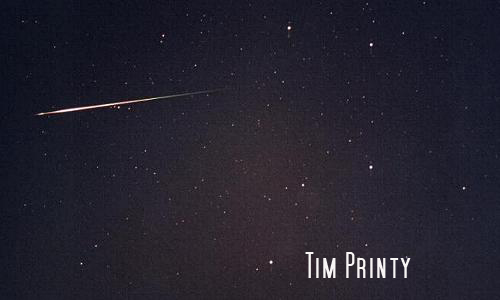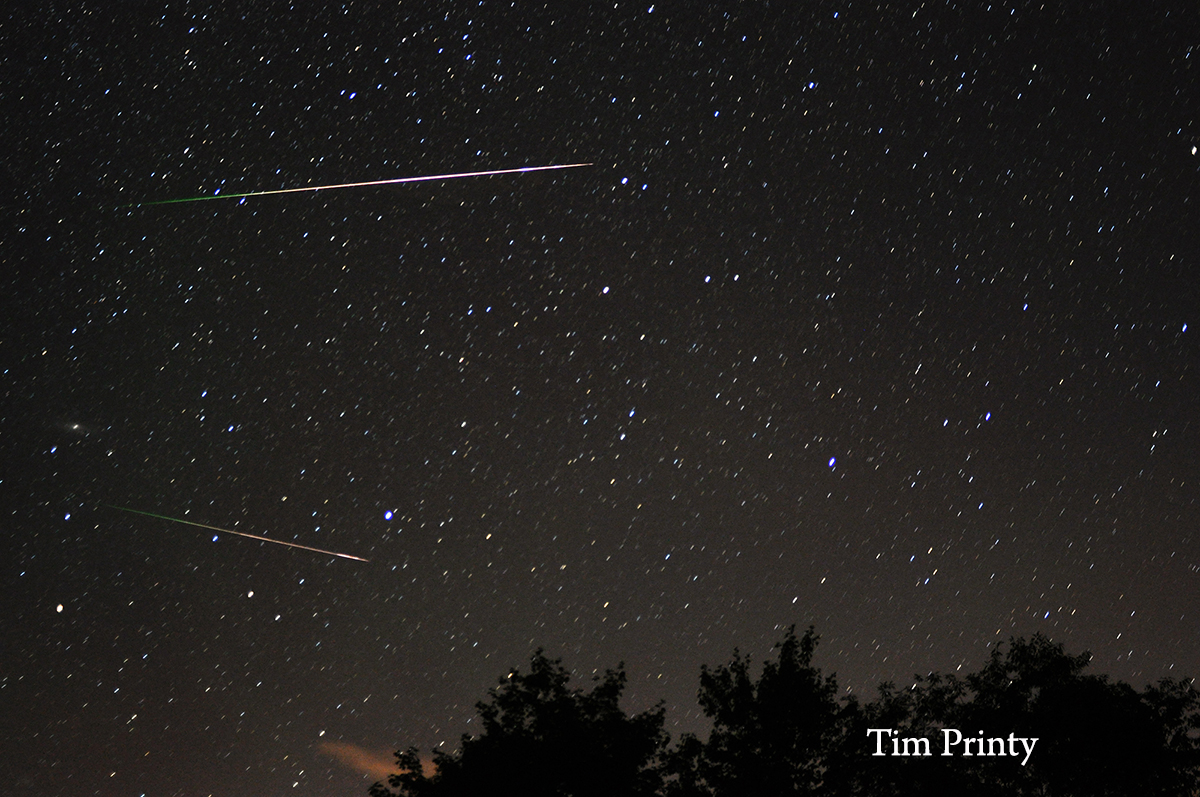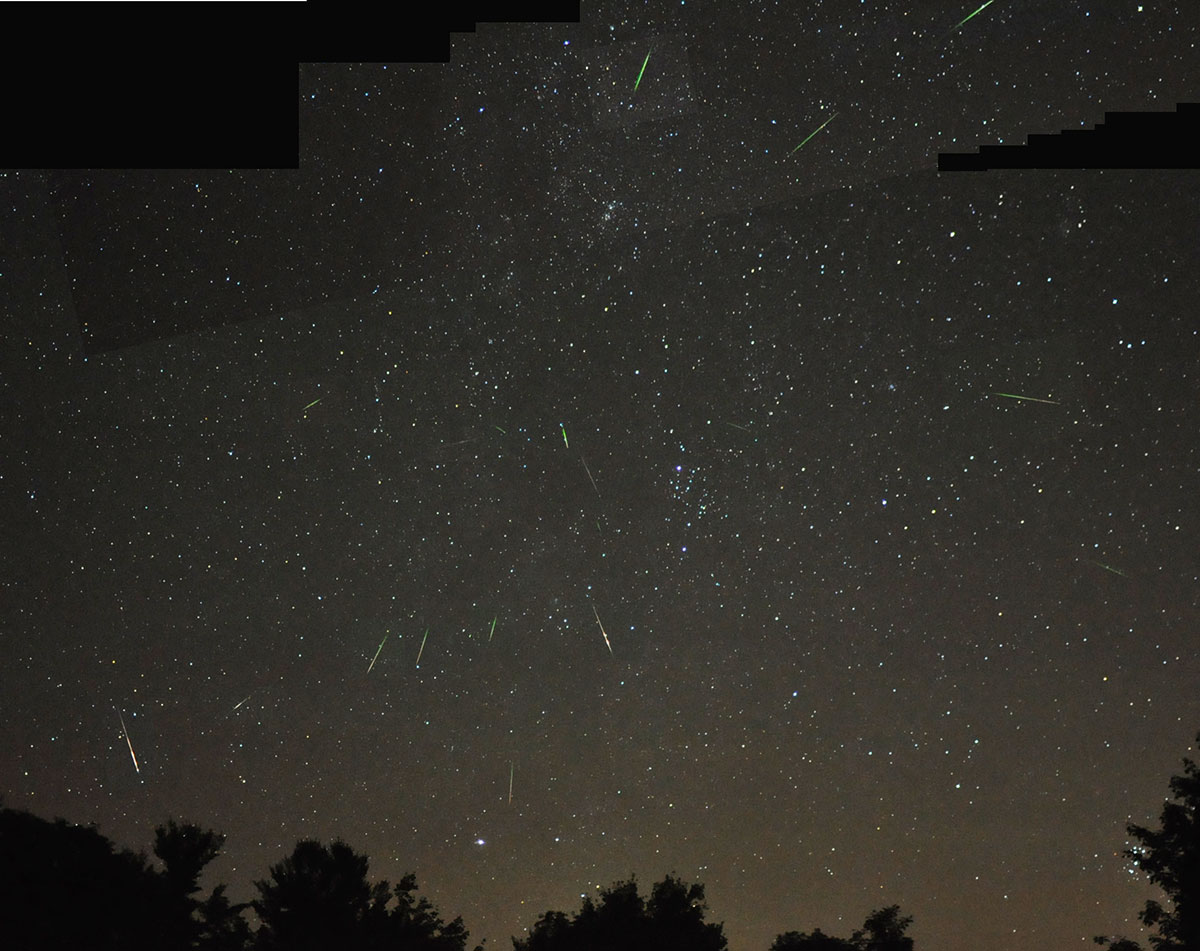

A brigh Leonid fireball seen during the 1996 display.
Meteors
My first serious amateur astronomy efforts were in the field of meteor observing. Over the years I have been quite the avid watcher of meteors and meteor showers. I have seen meteors brighter than the full moon and meteor showers that saw as many as 70-100 meteors an hour (including the 2001 Leonids described below with roughly 600/hr). My personal favorite showers are the Perseids in mid-August and the Geminds in mid-December. The year brings many meteor showers and I have experienced them all. Here are a few notes about each shower.
Quadrantids: Swift and not easy to photograph. The timing of the peak and moon phase has to be right if you want to see this shower at it's best.
Eta Aquarids: Swift meteors and not a very good shower for the Northern Hemisphere. Rates are much higher when viewed from the Southern Hemisphere.
Perseids: This is a great meteor shower and, in recent years, has not disappointed observers. At one point the Perseids were considered to be on the decline but this has changed since the passage of Comet Swift-Tuttle. There are plenty of fireballs especially in the early morning. One year, I was treated to two -12 fireballs within a minute of each other. About half of the meteors leave ion trains and many meteors end in terminal bursts. Rates usually are around 60 an hour but these could be much higher if you are catch it right. I recorded these two bright Perseids during the August 2015 display:

This mosaic image shows a collection of meteors I photographed back in 2013. One can see the radiant of the meteor shower clearly.

Orionids: Very swift. Often look like flashes of light. Occasional bright fireballs are visible. I remember one that was very short but as bright as the first quarter moon.
Leonids: Ho-hum in off years. However in the late 90's, this shower became highly prolific in fireballs and large meteor numbers. Many trains and many bright meteors were visible in 1996. The arrival of the parent comet, Temple-Tuttle, produced larger displays. The 2001 display was incredible and rates were around 600 an hour prior to twilight in New Hampshire. There were many fireballs and I saw a few point meteors come from the radiant. The display in 2002 had a smaller display even though moonlight interfered. In 2003, the display was almost non-existent. One should continue to monitor this shower for possible outbursts in the next few years. You can read about my observations of the 2001/2002 Leonid displays at http://www.astronomyufo.com/Astronomy/Leonids.htm
Geminids: AM meteors are often very swift but the ones visible before midnight are usually very bright and slow. A good shower and, on one occasion, I saw rates over 70 meteors an hour. Despite it being a winter meteor shower, I never fail to go out and check them out. Having the radiant rise long before midnight makes this shower especially suited for beginners, who do not wish to stay up too late to catch a few meteors (although rates after midnight increase rapidly towards the 60 per hour mark).